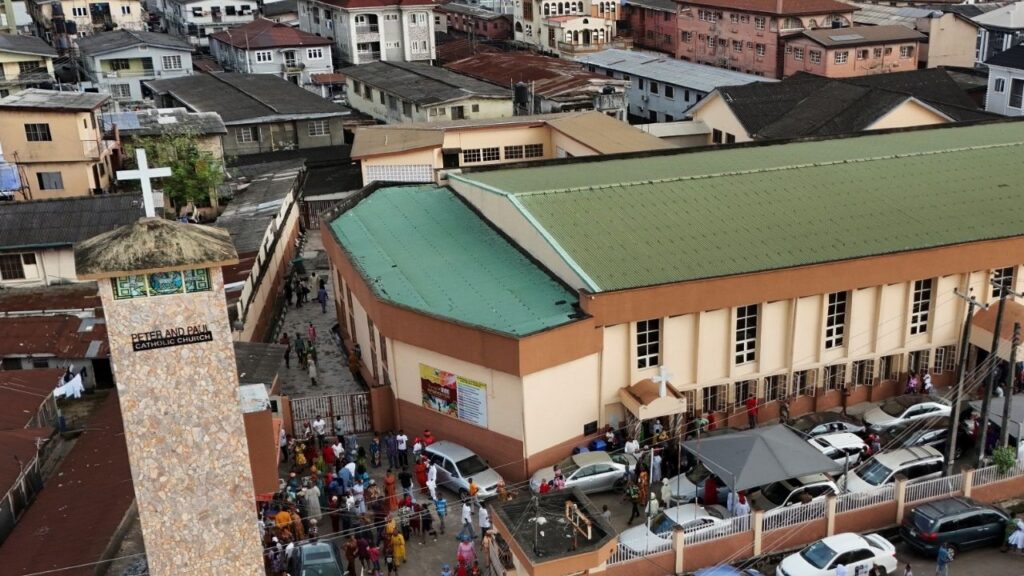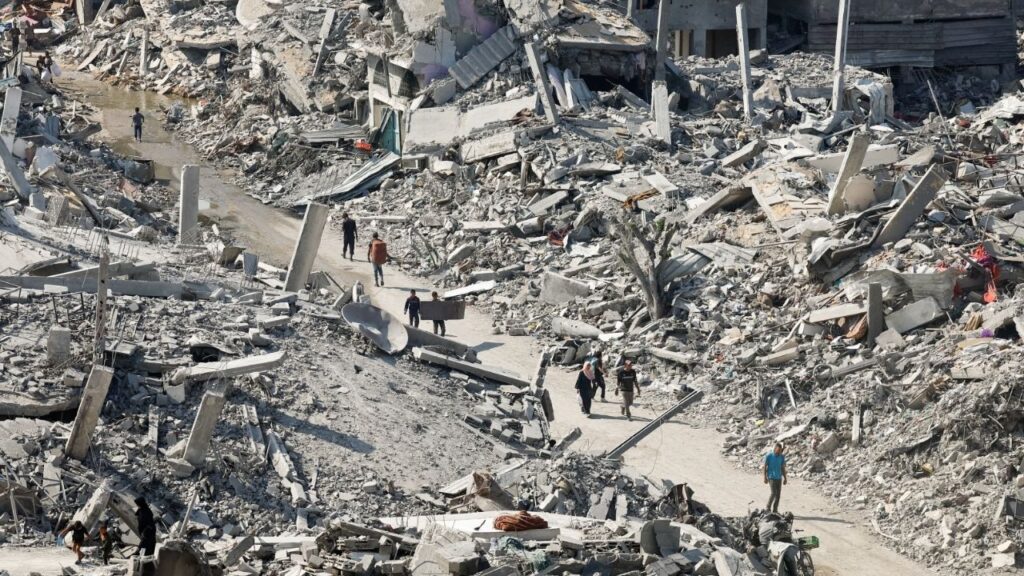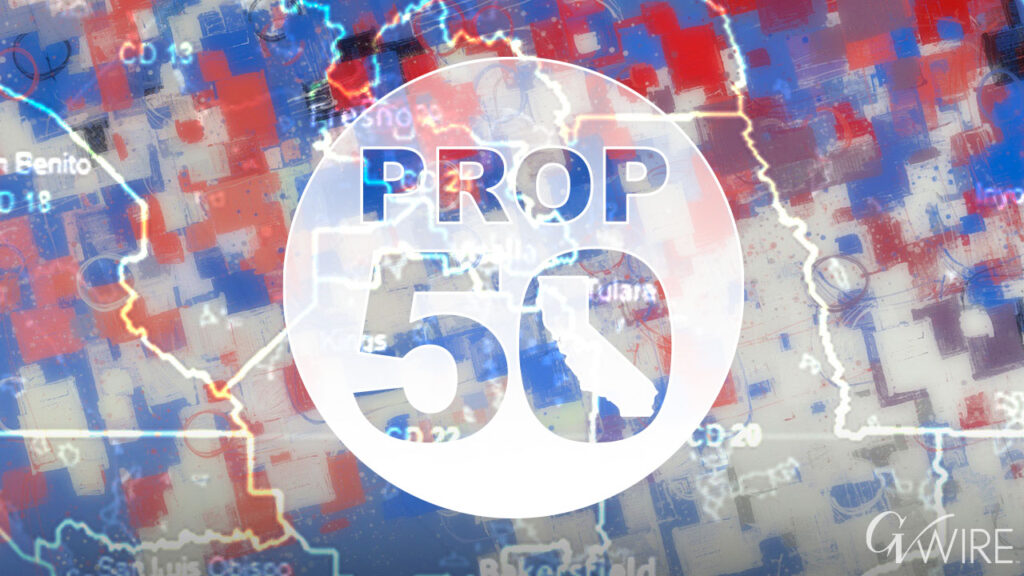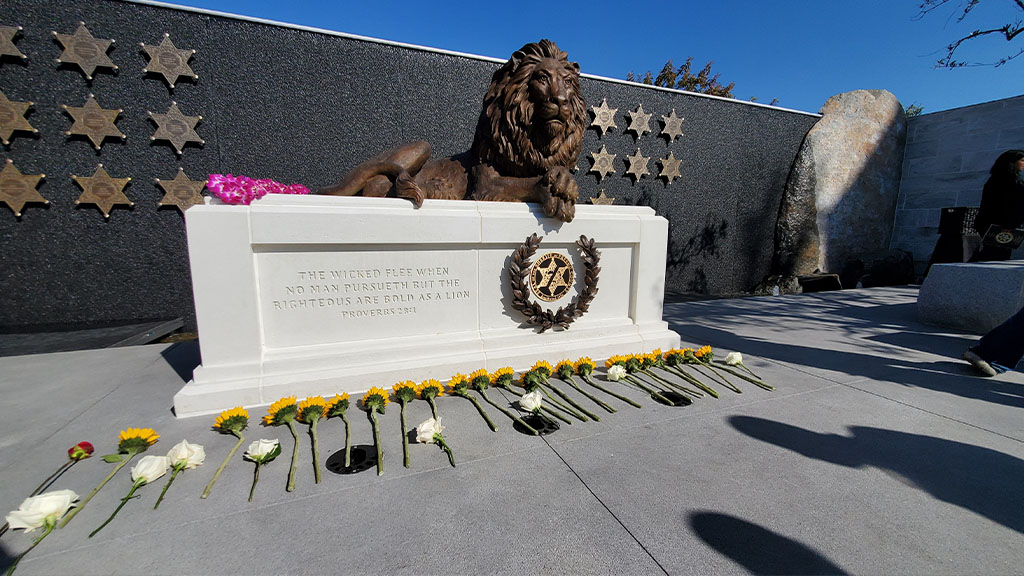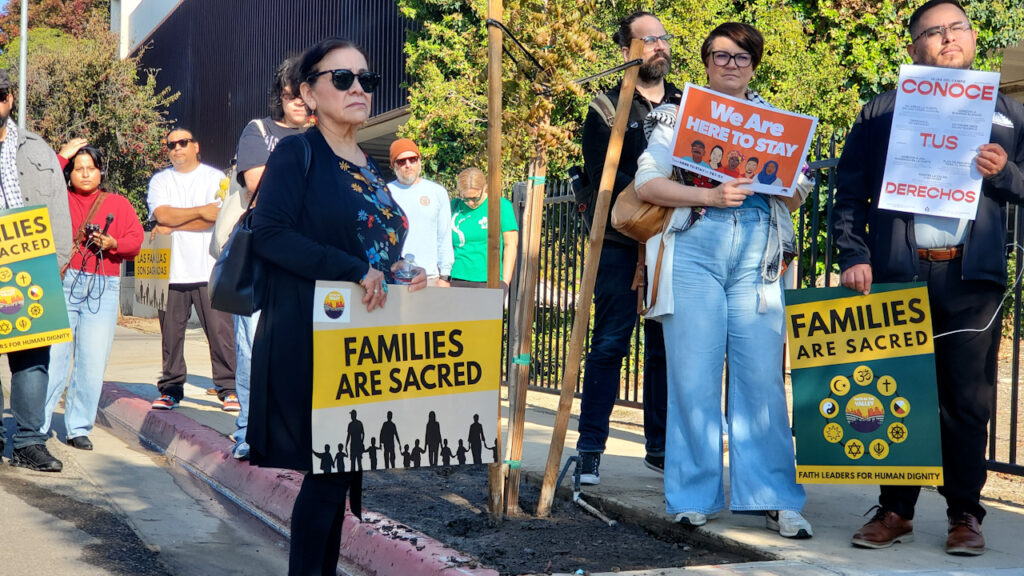Share
|
Getting your Trinity Audio player ready...
|
The uprising that occurred after the death a year ago of 22-year-old Mahsa Amini at the hands of Iran’s morality police could serve as a blueprint for future uprisings, one of which will someday successfully end the Islamic cleric-led regime that has held power for nearly a half century, says Hamid Entezam, an Iranian-American lecturer in comparative religions who is a close observer of Iranian and international politics.
But before that can happen, factions opposing the current regime will need to combine forces and also convince key members of the current regime to abandon it and side with them, Entezam says.
Entezam spoke this week with GV Wire about the impacts of overseas protests on the Iranian government and people, foreign affairs missteps by U.S. and Europe as well as missteps by opposition leaders, and the need for Iranians seeking change to decide whether they want to follow the model of South Africa, which emerged from apartheid into shared governing by blacks and whites without repercussions for the past, or the model of Libya, which after the overthrow of Muammar Gaddafi devolved into chaos and bloodshed.
Here is a Q&A with Entezam, edited for clarity and brevity:
GV Wire: What have the Iranians who participated in protests over the past year accomplished thus far?
Entezam: The uprising in 2022 began in Mahsa Amini’s hometown in the Kurdish dominated province, and it gradually grew into a sustained nationwide challenge to the regime. The uprising defied expectations. It lasted for months amid a violent crackdown. This uprising actually took the regime completely off-guard and off-balance. It never expected an unknown girl from a Kurdish minority from a teeny little town in the outlying areas of Iran, to become, as she became known, as the Daughter of Iran. That’s what Mahsa Amini became known as in Iran.
In 2017 and 2019 we had a couple of uprisings against the regime, but those uprisings were mostly against economic grievances and government mismanagement. And obviously the government cracked down. Hundreds of people were killed. What we call the Mahsa Movement, or the uprising after the death of Mahsa Amini, was quite different. First it brought together — and this is very significant — it brought together opponents of the clerical rule across class and ethnic lines. This was brand-new in in the history of various uprisings against the regime. The Iranian ex-pat community around the world are typically apolitical. Many of them go back and forth between host nation and Iran. And so they don’t want to get involved in politics. But after the death of Mahsa Amini, they came out in droves to attend public protests against the regime. Even high school and elementary school girls joined the protest. Singers, actors, sportsmen, sportswomen, celebrities got involved. This was perhaps the scariest scene for the regime, to see such a wide spectrum of the Iranian population come together and protest. It was truly a scary moment for the regime.
The second important achievement of this movement was that women were in the forefront of the protests. This was quite an accomplishment in a society that is still, by and large, patriarchal. The regime portrays itself as the guardian of Islam. And it portrays itself as the guardian of people’s religious beliefs. And historically, Iran has been a religious nation. After all, it gave rise to one of the oldest religions of the world, Zoroastrianism. After Islam entered Iran, Iranians contributed so much to the Islamic culture and civilization. Iran, despite the fact that these days a lot of Iranians badmouth Islam because of what the government is doing, but the Iranians, by and large, are still very religious. One of the things that was really brilliant on the part of the protesters is that even though they despise the religious government, the protesters never insulted religious sanctities. This was brilliant because it effectively disarmed the regime. It deprived the regime from one of its crucial tools for cracking down on uprisings, which is portraying the opposition as anti-Islam.
I think the Mahsa Movement, even though it has subsided, is a suitable model for future uprisings in Iran. Make no mistake about it, popular anger against the regime will burst again. It’s fire under ashes. It will happen again. But for any future movement to succeed in the long run, it has to bring the multitude of opponents together. Because there is a segment of the Iranian population that has been fighting for political democracy. They are very idealist. There are women who fight for their own rights. There are a lot of people in the lower-middle class that fight for economic welfare. None of them individually can make a dent in this regime. They all have to come together. And I think the Mahsa Movement laid out a blueprint for any future uprising. So that’s, in my opinion, the accomplishment of this movement.
The Next Spark
GV Wire: What do you think will be the next spark that will relight the fire that’s under the ashes now?
Entezam: That, nobody knows. It’s anybody’s guess. We have no idea. This regime has been doing what it did to Mahsa for 44 years. This thing was nothing new. Women in Iran have been subject to awful discrimination. They’ve been beaten in public for not covering their hair and all of that. Who knew that the death of a girl from the Kurdish minority would spark a nationwide uprising? We’ve had the whole gamut of uprisings in the past 44 years in Iran for different reasons. What will spark the next uprising is anybody’s guess. But what we know for a fact is that it will happen again. Because Iran is like a tinderbox. There is a lot of unhappiness against the regime in Iran. This regime does not have the interests of the average Iranian at heart. It does not represent the culture of Iran. It badly manages the Iranian economy. There are a host of grievances against the regime. What will be the spark for the next uprising? It’s anybody’s guess.
Change in Morality Police
GV Wire: In terms of restrictiveness, has there been any change over the past year, any loosening or tightening of restrictions?
Entezam: It’s interesting that if you go to Iran today, you will see a substantial number of Iranian women, especially in large cities like Tehran, Shiraz, in metropolises, they don’t cover their hair anymore. This is brand-new in the history of the Islamic Republic. The regime has tried to bring in the morality police, but it has not really succeeded. There is a bill in Iran’s parliament right now, they are debating what sort of steep fines they will levy on those who don’t observe the dress code in Iran. But because of the fear of backlash, this bill has pretty much died in the parliament. But on the other side, in Friday prayers, government officials come out lambasting women who don’t observe the dress code, threatening them very blatantly. But they have not been able to bring the morality police back onto the streets. They are still very concerned that there may be a backlash. My reading of the situation is that a substantial number of women in Iran today, particularly in large cities, are determined not to put their headscarves back on. They have drawn a line, and some of them are even inviting the regime to come and attack them. I mean, that is unbelievable. And the regime does not want to make the same mistake it did back in 2022. With respect to the morality police, it’s like in limbo, so to speak.
State of the Opposition
GV Wire: Why is the opposition unprepared at this point to effect any change?
Entezam: The opposition — I’m one of them, by the way. I’m part of this opposition —but I believe that the opposition suffers from some serious flaws and they need to do soul-searching and be ready for the next wave of protests. So let me just put my thoughts under the umbrella of what’s wrong with the regime-changer opposition. Because the opposition against the regime are manifold. Part of the opposition want gradual change, which ultimately will lead to regime change. But it would be sort of like step-by-step movement in that regard. But there is another part of the opposition that wants instant change, and that’s what they were hoping would happen in the Mahsa Movement back in 2022. It didn’t happen.
The opposition does not have a coherent leadership structure. A lot of people back in 2022 were saying that actually the fact that the opposition does not have a coherent leadership structure is a plus, because if the uprising had a leadership in Iran, obviously the leadership would be immediately arrested, put in jail, and that would be the end of the movement. Well, there is a ring of truth to that, that sort of movement without effective leadership can stage small-scale protests. If you want to bring down an autocratic regime, you need coherent leadership and coherent organization. You need a coherent leadership to put together a road map to bring down this regime in the least disruptive fashion for the people. That leadership needs to make a convincing case that, hey, Iranian people, listen, this is their road map. If you follow it, this regime will come down with the minimum amount of disruption in your day-to-day life.
A large segment of the opposition, particularly outside Iran, views the Islamic Republic as weak, unpopular, ineffective, facing imminent collapse. This is a horribly wrong view of the Islamic Republic. And the opposition, on the flip side, views itself as very strong and perhaps the only weakness that it has, it’s a little bit fragmented, so it has to unite. On both counts. I think the opposition is wrong. First of all, the regime is not as weak as the opposition claims. On the other hand, the opposition, in my opinion, is quite weak and ineffective to mount an existential threat to the regime. The regime not only successfully cracked down on the street protests in 2022, it did not even concede to any of the demands of the protesters. What does that tell you? Even on the issue of the morality police, the regime never said, we are going to put an end to it. That is in limbo right now. It’s like the regime is taking a wait-and-see attitude about it. When the regime is not even willing to concede on that thing which led to the uprising, that tells you something about the regime’s strength itself.
The regime has a very brutal, yet effective crackdown apparatus. Right after the regime was able to stop the street protests, it went on a revenge campaign. It executed a few of the very innocent protesters. What’s worse? Its agents staged chemical attacks against girls’ schools in Iran. There were tens of chemical attacks against girls’ schools across Iran. They literally would throw canisters of gas inside the classrooms. And a lot of girls got sick because of that. It happened for a couple of months across Iran. It only stopped, interestingly enough, because many of the clergy within and outside the regime protested. They said, you need to put an end to this. This is unbelievable. In my opinion, the opposition misreads the signs completely. The regime’s brutal crackdowns are not a sign of the weakness of the regime. It shows its effectiveness.
Last year, the regime had $60 billion in revenue from oil, gas, and petrochemical exports. $60 billion. Twice as much as 2021. So the regime is in a much better economic position than before the Mahsa Movement. A couple of months ago, it restored ties with Saudi Arabia. It joined the Shanghai Cooperation Organization. It joined BRICS, the BRICS Alliance — Brazil, Russia, India, China, South Africa Alliance. It continues its nuclear program unabated. It continues its ballistic missile program unabated, and the West has not even been able to contain this regime on those important fronts that impact the West’s security. In a nutshell, we should have no illusion about the nature of this regime and its effectiveness.
The opposition, to some extent, is delusional and naïve. The opposition whipped up expectations. I was against that. I said, Listen, when you guys do that without having created the right infrastructure for an effective uprising against the regime, the regime will crack down and that will lead to bad results for us. What is that bad result? Essentially, the youth that participated in the movement will become disheartened, will become disenchanted with politics altogether. because they realize that this regime, we can’t bring it down. That’s essentially what happened. Now you see a new wave of migration out of Iran. A lot of the elite are leaving Iran because they are under the impression that this regime is invincible. We can’t change it. And that’s the danger of the opposition overplaying its hand.
Uprising Must Include End Game
GV Wire: You said before that the opposition needs a road map to overturn the regime. But doesn’t that roadmap also need to plan for what happens when the regime is gone?
Entezam: Exactly. What does the future hold for regime change in Iran? Whether Iran will follow the example of South Africa or Libya depends on a couple of factors. Do you remember what happened in South Africa? We had the apartheid regime, and Nelson Mandela and the African National Congress were very successful to put together a broad-based coalition. They had a good road map in place. They ultimately not only succeeded in convincing the black South Africans to come out into the streets in large numbers, they also were very successful in allaying the concerns of the white South Africans that once the apartheid regime is gone, we will not kick you out to go back to Europe. So, what happened in Libya? Well, after Muammar Gaddafi was gone, Libya pretty much disintegrated. It was a meltdown. Whether Iran follows the example of South Africa or Libya depends on two factors: The behavior of the Iranian regime, and also the behavior of the opposition. The opposition cannot wash its hands and say, hey, listen, if Iran falls apart, it’s because of what the regime is doing. I think both the opposition and the regime have a part to play in the future of Iran.
We have a gray layer in the Iranian population that ultimately is going to be the make-or-break of regime change in Iran. Iran has three dominant layers. You have a minority of diehard supporters of the regime. Estimates vary. Some say maybe 10 to 20% of the population for a number of reasons are active supporters of this regime. Some have ideological reasons to support this regime. Others benefit economically from this regime. These diehard supporters of the regime, in their eyes, whatever this regime does is right. On the opposite side, we have diehard opponents of the regime, who in their eyes, this regime can never, ever do anything right. In between the two opposites sit the majority of the Iranians, which in political science we call the gray layer of society. This gray layer, they are very unhappy with the regime. Again, for a variety of reasons. Some are unhappy because of economic reasons. Some are unhappy because under this regime, Iran has been isolated internationally. These folks have the money, they want to travel outside Iran. They can’t get visas to come to the U.S. or go to Europe for their vacations. Others want to send their kids abroad to study, but because of the international isolation, they cannot. There is a gamut of reasons for the discontentment of the gray layer against the regime.
This gray layer is the linchpin of Iranian politics. Sometimes the gray layer participates in the elections in large numbers. That happened when they brought to power Mohammad Khatami, the reformist president of Iran. They voted in large numbers to bring Rouhani to power, the previous president of Iran. Whenever this silent majority, the gray layer, participates in the elections, it gives an aroma of legitimacy to this regime. The regime needs the gray layer to portray an image of legitimacy abroad. In the Mahsa Movement, a good chunk of the gray layer came out in support of the movement. And that’s why the Mahsa Movement was partially successful. The regime is not concerned about the regime changers at all. It has priced them into its calculations. The staunch regime changers will never succeed in bringing this regime down by themselves. The regime is most worried about the gray layer. The opposition should convince this middle layer that Iran will not fall apart after the Islamic Republic the way Libya fell apart. There will not be a total breakdown of law and order. Iran will not disintegrate along religious and ethnic lines because, as you probably know, Iran is a hodgepodge of minorities, religious and ethnic. The majority of Iranians who are what they call Fars, the middle part of Iran. On the outer edges of Iran, you see all sorts of minorities. You see the Kurdish, the Turks, Arabs, Balochis. Iran can easily disintegrate right along religious as well as ethnic lines. That’s one of the worries of that gray layer in Iran. The opposition, if it had effective leadership, it would put together a road map to allay the concerns of this silent majority.
And one other thing: A segment of the Islamic Republic must cross over if this regime is to fall. That’s what happened back in 1979. A segment of the Pahlavi regime crossed over to the revolution side, particularly the armed forces. Towards the end of the Pahlavi regime’s reign in Iran, the higher echelons of the Iranian army came over and pledged allegiance to the revolution. A lot of the bureaucrats joined the revolution. The same thing must happen in Iran. Whenever this coherent leadership emerges, it has to start talking to the more rational element of this regime, to convince them that when this regime is gone, there is not going to be mass execution of former regime officials. After the downfall of Saddam Hussein, there was this de-Ba’athification project that led to catastrophe in Iraq. They need to convince that echelon of the regime officials that they will still have a place in Iranian society. This is critical for the future leadership of the revolution against this regime to do.
Mistakes by Opposition
GV Wire: So not only do the people who want change have to convince enough people to also want change, but they also have to figure out what that change will lead to?
Entezam: Exactly. This is critical. And I think a lot of folks in the opposition, especially overseas, completely are oblivious to that. Whenever I bring it up, sometimes I get labeled as a supporter of this regime. Hey, you are disheartening the people, you are making them frightened of changing the regime. I tell them, hey, listen, I’m not frightening people. People are already frightened. You need to put together a road map to allay their fears. And this road map, unfortunately, does not exist. And that’s one reason why the 2022 uprising did not succeed. It didn’t have an effective leadership. It did not have any road map.
And what’s worse, I think the opposition played into the hands of the regime. Some of the high-profile opposition figures in Iran started flying to European capitals to meet with prime ministers, to work with presidents. They went to the White House to gather support against this regime. The regime immediately pointed to these guys to say that these street protesters are nothing but stooges of foreign powers. And that gave some kind of legitimacy to the regime to crack down on protests. So, unfortunately, sometimes the opposition plays right into the hand of the regime. Not only that, this bad behavior of these opposition figures actually raised eyebrows among the nationalists in Iran — because the Iranians are staunchly nationalist. If you give them just a hint that foreign powers are backing you, Iranian nationalist sentiments will flare up and they will have a dim view of you.
Impact of Overseas Protests
GV Wire: Did the protest overseas, many of which involved ex-patriate Iranians, put any pressure on the regime, or were they seen as outside troublemakers who were not nationalists?
Entezam: I’m sure you remember the Soviet era, when the communists were in power in the former Soviet Union. The Soviet regime would not allow the intellectuals to leave the Soviet Union. They would not issue passports to them, to the likes of Alexander Solzhenitsyn. All of the intelligentsia, all their brainpower had to stay in the Soviet Union. They would never allow opposition figures to leave the Soviet Union. The Islamic Republic since Day One has done the exact opposite. It actually encourages opposition figures to leave Iran. Why? Because it is convinced that as soon as you leave Iran, you will become ineffective. Yeah. Go outside Iran. Complain as much as you want. But sooner or later, you will become disheartened. You will be tired. And you will just say, Hey, listen, forget about it. I have kids, I have family. I have to support them. That’s the fact. This regime has never been concerned about the foreign opposition. By that I mean opposition figures who live outside Iran.
When the ex-pats came out in droves, it didn’t really make the government worried, but it was a great morale booster for the protesters inside Iran. And that’s great. And that’s why I always encourage Iranians outside the country to join the street protests in Fresno, San Diego, Washington, D.C. Go out, protest, not that you’re going to make a dent in the behavior of the regime, but that would be a great morale booster for the people inside Iran.
Pressure from the West
GV Wire: Is there any pressure that Western governments can apply to Iran?
Entezam: The U.S. and Europe have left themselves few good options to mount an effective response to human rights abuses of this regime. Iran has been sanctioned into the Stone Ages. Donald Trump put what he called a maximum pressure campaign against this regime, and promised that this regime is going to collapse in six months. I don’t know whether you remember that wishful thinking or not. At that time, I came out in opposition to that pressure campaign, and unfortunately, I ended up being right in my critique. I said, this regime, if it survives this sanction, it will become very, very resilient to any kind of financial pressure.
As we speak now, Iran is teaching Vladimir Putin how to evade Western sanctions, because now Iran is an expert in evading sanctions. That’s what happens when you have somebody like Donald Trump running your foreign policy. The effect of those sanctions was to make this regime very, very strong in the final analysis. Something even worse happened as the result of those sanctions. These sanctions further empowered the Revolutionary Guards. The Revolutionary Guards were essentially originally set up to be a security apparatus to safeguard the so-called Islamic revolution in Iran, to safeguard the regime against domestic and foreign threats. It was originally supposed to be a security apparatus. Due to the sanctions, now the security guards are effectively controlling much of Iran’s formal and black-market economy. These are the guys who are maneuvering Iran out of sanctions.
The Revolutionary Guards are far more powerful than they were five or six years ago. The Revolutionary Guards now effectively control the Iranian parliament. Many of the ministers inside the government of Iran today are former Revolutionary Guard commanders. Many of the Revolutionary Guard commanders are essentially running economic conglomerates in Iran. It’s all because of the foreign policy mistakes of the United States and Western Europe, in my opinion. The West does not have much power or leeway over Iran. Russia and China wield far more influence over the Islamic Republic than the West. I think the West did itself a disservice by completely disengaging with Iran. I think if the West had crafted a more rational foreign policy towards Iran, had made overtures to the Islamic Republic, rather than Iran tilting towards Russia and China, probably it should have been the West that would have provided more loan guarantees to the Islamic Republic. That way, Iran would be more indebted to the West than Russia and China. So that’s the concern that I have right now, that Iran is now completely aligned with Russia and China. And in short order, when we need Iran to be in the Western coalition against Russia and China in the Strait of Hormuz, unfortunately, they will secure the Strait of Hormuz for China and Russia.
I am completely disheartened by our foreign policy apparatus in Washington when it comes to handling this horrible regime in Iran. I hope I don’t sound like a supporter of this regime to you, but I think we need to be a lot more intelligent and rational in dealing with this terrible regime. We cannot bring this regime down by wishful thinking, we cannot bring this regime down by making grand promises. I think a lot of us are daydreaming. And the sooner we wake up to the realities of this regime, the sooner we can put together a more effective campaign to put an end to this regime. So far, we haven’t done that. Neither the West nor the opposition outside Iran have put together an effective plan to bring this regime down.
When Will Referendum Happen
GV Wire: It sounds like there’s a lot of work that needs to be done from the opposition within Iran as well as the international community?
Entezam: Let me give you one more example. There is a politician in Iran called Mir-Hossein Mousavi. Mir-Hossein Mousavi was a former prime minister of Iran when Khomeini was alive. He was Iran’s prime minister for about eight years. He was the leader of the Green movement that staged probably the greatest challenge to this regime. Now, Mir-Hossein Mousavi has gradually tilted more and more towards the complete removal of the Islamic Republic. Last year he came out publicly to support a referendum for the future of the Islamic Republic. He said we need to have a referendum in Iran. People should vote whether they want the Islamic Republic or not. If the people do not want the Islamic Republic, we need to have a new constitution for Iran. I think he’s absolutely right. In the final analysis, we need to have the referendum. The problem is that Mir-Hossein Mousavi did not put forth a blueprint of how do we go from here to there. How are you going to bring about the referendum? Because obviously this referendum has to be done in Iran. How are you going to do that as long as this brutal regime is in power? Part of the problem both inside and outside Iran is a meaningful, rational blueprint to bring this regime down. We just don’t have that.
Iran’s Security Apparatus
GV Wire: Why is it so difficult for protests in Iran to be successful?
Entezam: The first thing that you hear these days, why the Mahsa Movement did not succeed. The answer typically is because the regime brutally cracked down on protesters. Which is true. We need to have a better appreciation for the security apparatus in Iran. And what I’m about to share with you can also have an impact on our own foreign policy vis a vis Iran and the Middle East. This regime has a very strong security apparatus. We saw only the tip of the iceberg last year. The regime brought out only a tiny portion of its crackdown apparatus. The crackdown apparatus in Iran consists of many layers. You have the national police force, and the national police force has an anti-protest department. Much of the protest was put down by Iran’s national police. Aside from that, the regime has an armada of Revolutionary Guards and foreign mercenaries. It’s the foreign mercenaries that a lot of people don’t pay attention to. The regime also has plainclothes thugs. These are the most feared in Iran. These guys are not committed to the regime for ideological reasons. They are hired guns. They show up suddenly on the streets with their clubs, knives, and machetes, they just beat people up and immediately they disappear. We have the national police and we have these thugs.
The Revolutionary Guards were put together as a force to put down protests against the regime. The Revolutionary Guards have a militia called the Basijis. Both the Revolutionary Guards and the Basijis are extremely well-armed. They are well-financed, well-lubricated. And we really didn’t see much of them last year at all. They are there, and they are very brutal, they’re very vicious. Aside from that, we have foreign mercenaries. And that’s the part that is important for our foreign policy as well. These mercenaries are paid and trained by the Revolutionary Guard in Iran. Hezbollah in Lebanon is probably the most well-known one. They are in Iraq as well. Kata’ib Hezbollah or Hezbollah Brigades. These are the guys in Iraq. League of the Righteous, they are financed and trained by the Revolutionary Guards in Iraq. The Fatemiyoun Brigade, they are Shiite Afghanis. Again, funded by Iran.
These guys have two roles to play for the Islamic Republic. They essentially are used by Iran to project its power in proxy wars across the Middle East. You see these forces at play in Syria. You see them at play in Lebanon, in Iraq, in Yemen. So essentially, they are extensions and the arms of the Islamic Republic. The Islamic Republic counts on these foreign militia forces to put down any rebellion inside Iran should the Iranian security forces refuse to fight street protesters. We haven’t seen these guys either. So that’s why I’m saying, we should have no illusions about the power and the viciousness of this security apparatus, the crackdown apparatus in Iran. We have not seen even 50% of the force that the Islamic Republic can bring to bear in order in order to put down rebellions. And that makes the job of any future leadership so difficult. How do you deal with that? How do you disarm the security apparatus? That’s what a revolutionary leadership must deal with.
What’s Required of Opposition Leadership
GV Wire: Sounds like it’s change that has to come from within.
Entezam: If you ask me, what are your thoughts on any kind of leadership? I would say that leadership must emerge from inside Iran because it has a much better pulse of the regime and the movement in Iran. That leadership inside Iran must be able to talk to the security apparatus inside Iran, must be able to talk to the higher echelons of the political establishment in Iran, must be able to convince them to cross over. Without that, this regime will put down any uprising in the future, just as it has done in the past 44 years.
RELATED TOPICS:
Categories

Fresno Launching Neighborhood Repaving Project Monday






